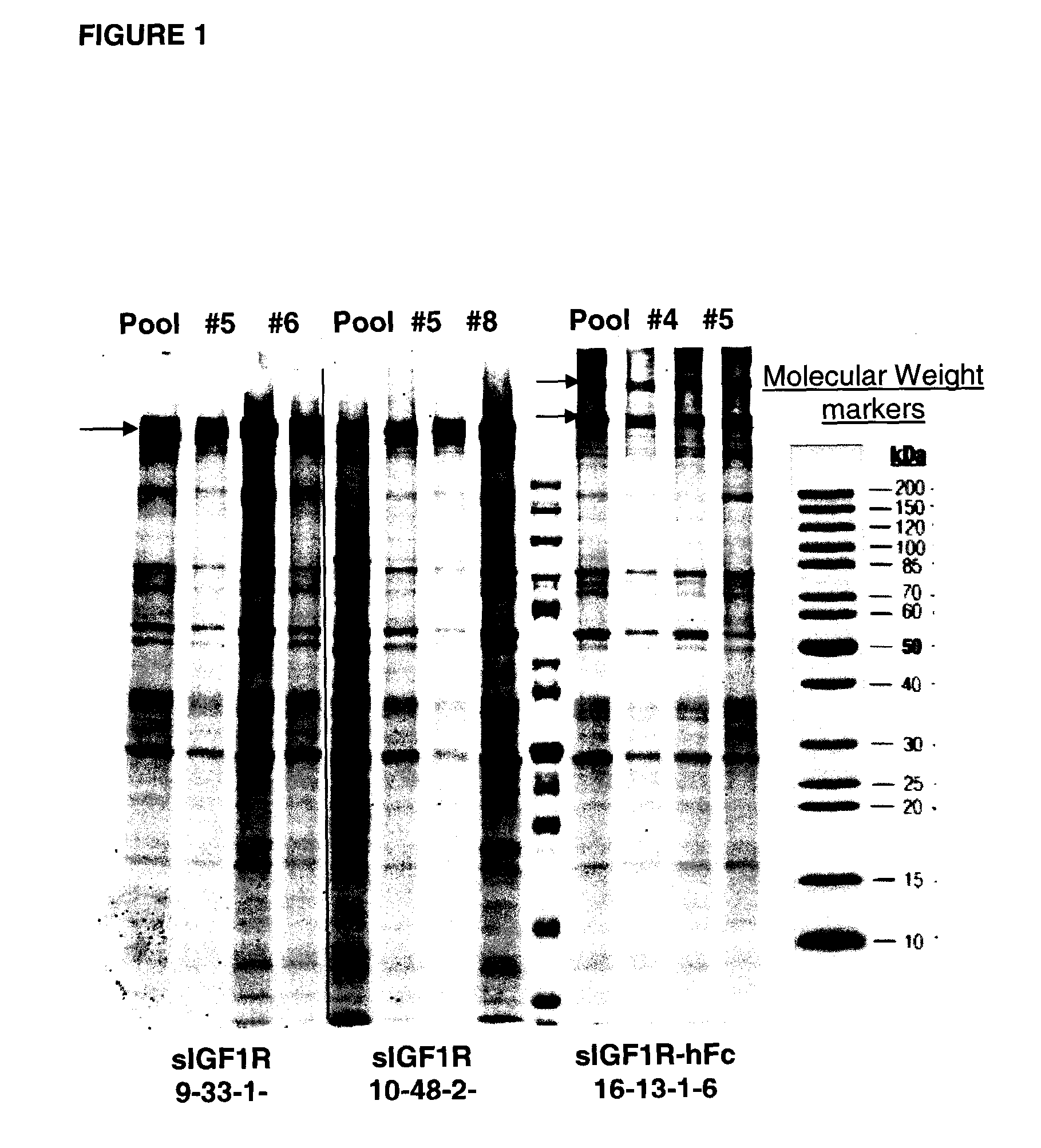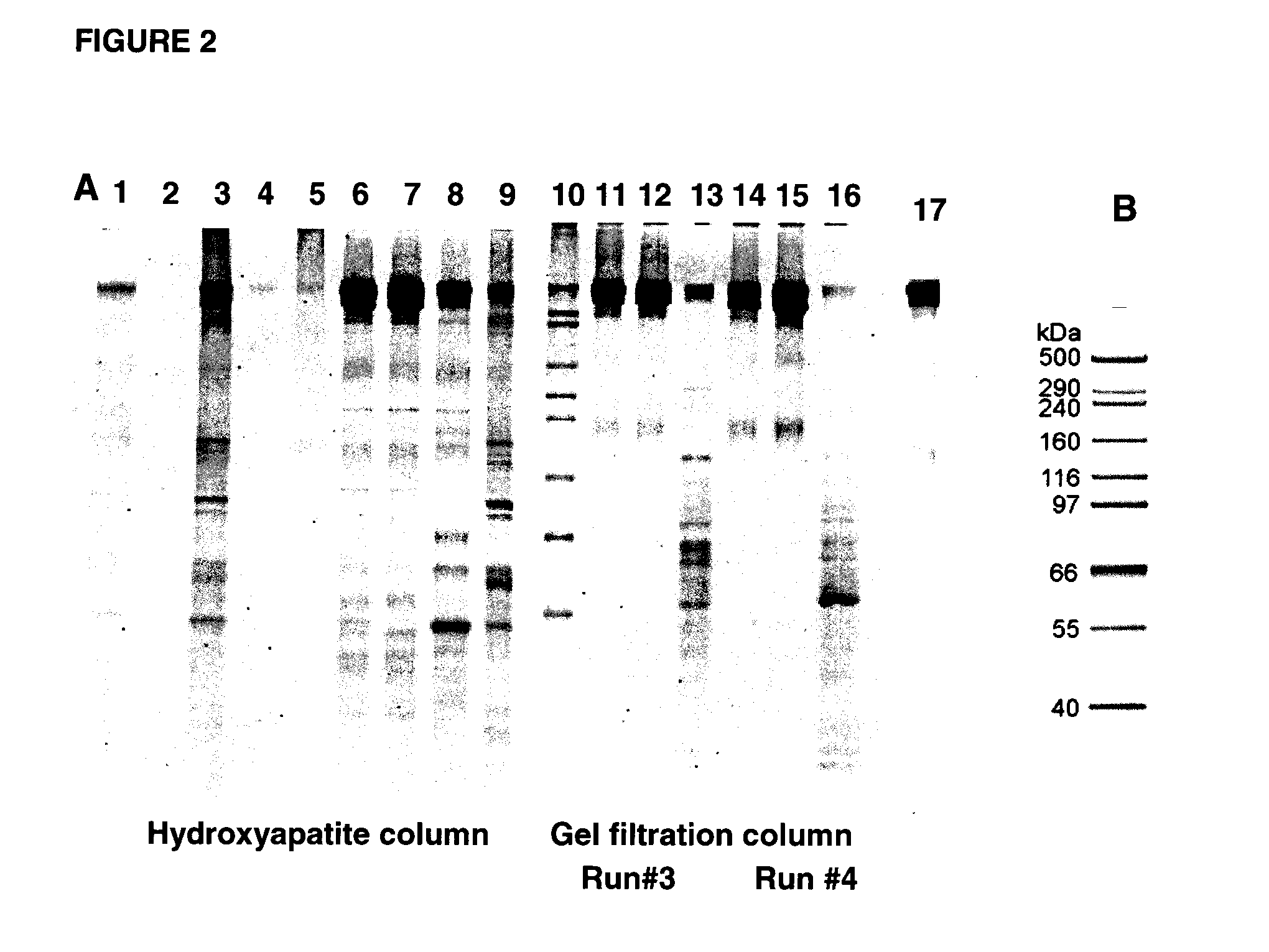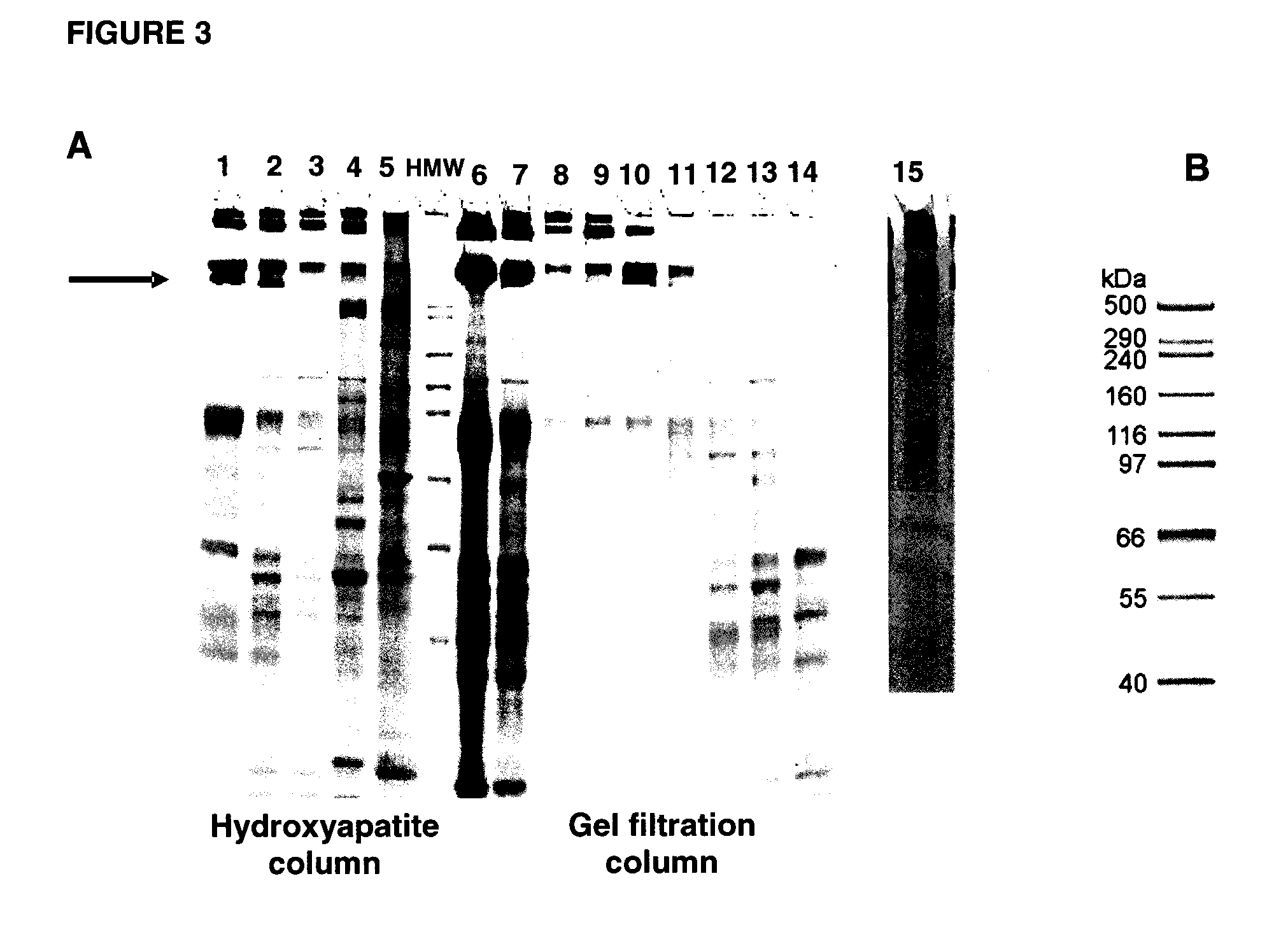SOLUBLE IGF RECEPTOR Fc FUSION PROTEINS AND USES THEREOF
a technology of soluble igf receptor and fusion protein, which is applied in the field of new drugs, can solve the problems of reducing pancreatic insulin production and diabetes, affecting the insulin receptor/insulin axis with undesirable effects on glucose and lipid metabolism, and adcc reactions leading to hematological toxicity
- Summary
- Abstract
- Description
- Claims
- Application Information
AI Technical Summary
Benefits of technology
Problems solved by technology
Method used
Image
Examples
example 1
Production and Purification of Trap Proteins
[0125]We first developed and optimized a purification method for His-tagged sIGFIR. Thirteen liters of 293 cells expressing sIGF1R were produced and concentrated. The His-tagged sIGF1R was purified from the concentrated stock using IMAC-chromatography. The purified protein was used as control for developing an affinity chromatography purification protocol using insulin for sIGF1R capture. After unsuccessful attempts to capture sIGF1R on insulin columns, a new 2-step purification method was developed: a capture step on a hydroxyapatite column followed by gel filtration. Purified protein was obtained (“Traps A, B, C”; Table I) for testing. After developing the method with His-tagged sIGFIR produced in 293 cells, it was validated using tag-free sIGFIR that was produced from pooled CHO cells expressing sIGFIR and Fc-sIGFIR (i.e., without and with Fc, respectively) as described below.
[0126]For purification of sIGFIR from a CHO cell pool, two in...
example 2
Analytical Assays for Quality Control of Trap Proteins
[0133]For characterization of Trap proteins, analytical assays to determine, for example, purity, integrity, aggregation and glycosylation of the proteins, were developed. Both sIGFIR and Fc-sIGFIR proteins appeared to be significantly pure, except for the presence of HMW species in the Fc-sIGFIR preparations, based on gel scanning (See FIG. 2, for which gel scanning indicated purity of 95 to 97% for sIGFR for lane 17; and FIG. 3, for which gel scanning indicated purity of 94% for Fc(IgG1)-sIGF1R for lane 15). No aggregation of either protein was observed after several months of storage at 4° C. or −70° C.
[0134]Glycosylation patterns in the two proteins were analyzed by mass spectrometry (FIG. 7). The analysis showed that sIGFIR (“Trap D”) and Fc-sIGFIR (“Trap E”) have 19 and 20 potential N-linked sites, respectively. Each site is decorated with a variety of glycans differing in size and degree of sialilation. The glycoform distr...
example 3
Functional In Vitro Assays for sIGFR and Fc-sIGFR Proteins
[0135]In order to select the most sensitive and functional in vitro assays for tesing the decoy proteins of the invention, we first used 4 different in vitro assays to measure the effect of purified Trap proteins on tumor cell properties relevant to malignant progression and metastasis (Table I). Namely, we measured the ability of the Trap proteins to block tumor proliferation, cell survival, anchorage independent growth, and invasion in the presence of IGF-I. For all experiments, we used highly metastatic Lewis lung carcinoma subline H-59 cells. After the initial screening, we selected the anoikis and invasion assays for complete analyses of all Trap proteins because of they are: (i) semi-automated, (ii) less subject to user-dependent variability, (iii) have superior reproducibility, and (iv) are considered better in vitro correlates of the metastatic potential of tumor cells. The results of all functional in vitro assays ar...
PUM
| Property | Measurement | Unit |
|---|---|---|
| pH | aaaaa | aaaaa |
| pH | aaaaa | aaaaa |
| pH | aaaaa | aaaaa |
Abstract
Description
Claims
Application Information
 Login to View More
Login to View More - R&D
- Intellectual Property
- Life Sciences
- Materials
- Tech Scout
- Unparalleled Data Quality
- Higher Quality Content
- 60% Fewer Hallucinations
Browse by: Latest US Patents, China's latest patents, Technical Efficacy Thesaurus, Application Domain, Technology Topic, Popular Technical Reports.
© 2025 PatSnap. All rights reserved.Legal|Privacy policy|Modern Slavery Act Transparency Statement|Sitemap|About US| Contact US: help@patsnap.com



